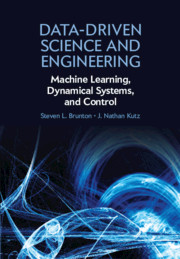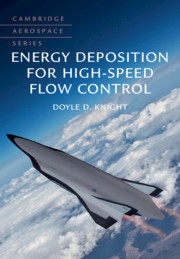3653 results in ebooks in fluid mechanics
Frontmatter
-
- Book:
- Energy Deposition for High-Speed Flow Control
- Published online:
- 08 February 2019
- Print publication:
- 21 February 2019, pp i-iv
-
- Chapter
- Export citation
8 - Modeling Energy Deposition as an Ideal Gas
-
- Book:
- Energy Deposition for High-Speed Flow Control
- Published online:
- 08 February 2019
- Print publication:
- 21 February 2019, pp 243-272
-
- Chapter
- Export citation
5 - DC Discharge
-
- Book:
- Energy Deposition for High-Speed Flow Control
- Published online:
- 08 February 2019
- Print publication:
- 21 February 2019, pp 86-132
-
- Chapter
- Export citation
Author Index
-
- Book:
- Energy Deposition for High-Speed Flow Control
- Published online:
- 08 February 2019
- Print publication:
- 21 February 2019, pp 445-448
-
- Chapter
- Export citation
Appendix E - Bessel’s Equation
-
- Book:
- Energy Deposition for High-Speed Flow Control
- Published online:
- 08 February 2019
- Print publication:
- 21 February 2019, pp 369-371
-
- Chapter
- Export citation
Appendix D - Microwave Waveguides and Components
-
- Book:
- Energy Deposition for High-Speed Flow Control
- Published online:
- 08 February 2019
- Print publication:
- 21 February 2019, pp 342-368
-
- Chapter
- Export citation
References
-
- Book:
- Energy Deposition for High-Speed Flow Control
- Published online:
- 08 February 2019
- Print publication:
- 21 February 2019, pp 422-444
-
- Chapter
- Export citation

Data-Driven Science and Engineering
- Machine Learning, Dynamical Systems, and Control
-
- Published online:
- 15 February 2019
- Print publication:
- 28 February 2019
-
- Book
- Export citation

Energy Deposition for High-Speed Flow Control
-
- Published online:
- 08 February 2019
- Print publication:
- 21 February 2019
Acknowledgements
-
- Book:
- Principles of Thermodynamics
- Published online:
- 14 December 2018
- Print publication:
- 03 January 2019, pp xv-xvi
-
- Chapter
- Export citation
9 - Matter and Electromagnetic Fields
- from Part IV - Exercises and Solutions
-
- Book:
- Principles of Thermodynamics
- Published online:
- 14 December 2018
- Print publication:
- 03 January 2019, pp 456-466
-
- Chapter
- Export citation
11 - Thermodynamics of Irreversible Processes
- from Part III - Continuous Media
-
- Book:
- Principles of Thermodynamics
- Published online:
- 14 December 2018
- Print publication:
- 03 January 2019, pp 308-360
-
- Chapter
- Export citation
6 - Phase Transitions
- from Part IV - Exercises and Solutions
-
- Book:
- Principles of Thermodynamics
- Published online:
- 14 December 2018
- Print publication:
- 03 January 2019, pp 405-419
-
- Chapter
- Export citation
5 - Calorimetry
- from Part IV - Exercises and Solutions
-
- Book:
- Principles of Thermodynamics
- Published online:
- 14 December 2018
- Print publication:
- 03 January 2019, pp 399-404
-
- Chapter
- Export citation
Contents
-
- Book:
- Principles of Thermodynamics
- Published online:
- 14 December 2018
- Print publication:
- 03 January 2019, pp v-xii
-
- Chapter
- Export citation
Frontmatter
-
- Book:
- Principles of Thermodynamics
- Published online:
- 14 December 2018
- Print publication:
- 03 January 2019, pp i-iv
-
- Chapter
- Export citation
9 - Matter and Electromagnetic Fields
- from Part III - Continuous Media
-
- Book:
- Principles of Thermodynamics
- Published online:
- 14 December 2018
- Print publication:
- 03 January 2019, pp 241-276
-
- Chapter
- Export citation
2 - Entropy and Second Law
- from Part IV - Exercises and Solutions
-
- Book:
- Principles of Thermodynamics
- Published online:
- 14 December 2018
- Print publication:
- 03 January 2019, pp 372-378
-
- Chapter
- Export citation
3 - Thermodynamics of Subsystems
- from Part I - Foundations
-
- Book:
- Principles of Thermodynamics
- Published online:
- 14 December 2018
- Print publication:
- 03 January 2019, pp 49-69
-
- Chapter
- Export citation
Part IV - Exercises and Solutions
-
- Book:
- Principles of Thermodynamics
- Published online:
- 14 December 2018
- Print publication:
- 03 January 2019, pp 361-362
-
- Chapter
- Export citation
